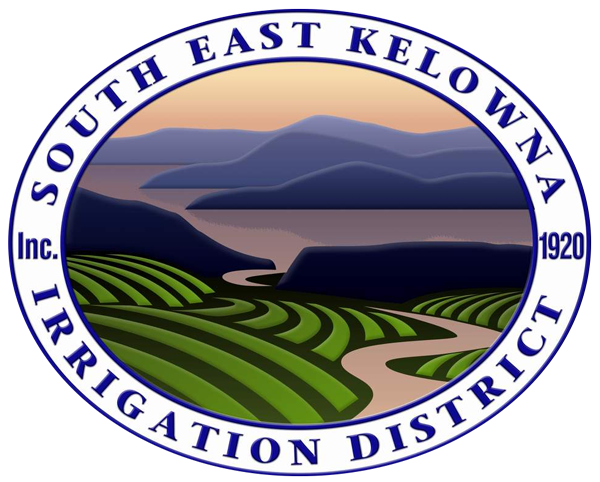Why conserve water? Whether it’s in-home, domestic sprinkling or agricultural irrigation, water conservation makes sense for a number of reasons:
Supply – With a watershed of only 25 square miles (65 km2), SEKID has historically been a water short district. As with any water supply system, the least expensive water supplies are the ones that are developed first. In SEKID’s situation, the options for developing new water supplies are limited and expensive. This is due to both the demographics and location of the distribution area.
The 9,000 acres of land that SEKID supplies with water (about 22% of the area of Kelowna) are mainly rural/agricultural and not densely populated. Much of the water supply, about 80 to 85%, is used to irrigate crops. This means that the cost of developing new water supplies and operating the water system must be borne by relatively few rate payers.
In addition, the location of the district on the south slopes of Kelowna limits the options for developing additional economical water sources. Most of the water is currently supplied from upland storage reservoirs, which rely on run-off from winter snow packs to fill each year. The district has very good quality groundwater sources, but these are expensive to run, particularly under our our current distribution network, where, with the exception of the Hall Road Area, a large portion of our groundwater wells supply irrigation. Under our Water Quality Improvement Program our distribution system will be restructured in the near future to divert our groundwater supplies into a separate distribution system for domestic use only. This will provide an excellent source of potable water for the residents of the district.
A good water conservation program makes our existing water supply go further.
Infrastructure – More efficient use of existing water supplies can defer or eliminate the need to upgrade pipelines and other distribution system infrastructure. This means that existing system capacity can accommodate additional growth without the need for expensive upgrades. Lower demand also means less wear and tear, which can extend the life of the water system and defer renewal costs.
Operating – Lower wear and tear on the system also leads to lower operating and maintenance costs. Costs directly associated with consumption such as power and chlorine are lower, as are the maintenance costs associated with replacing items that routinely wear out.
The district’s water conservation program is intended to promote efficient use of water resources to insure the maximum benefit can be obtained from the available water supply and minimize the need to develop costly new water sources. Efficient water use also saves money through lower operating costs and deferred capital costs.

